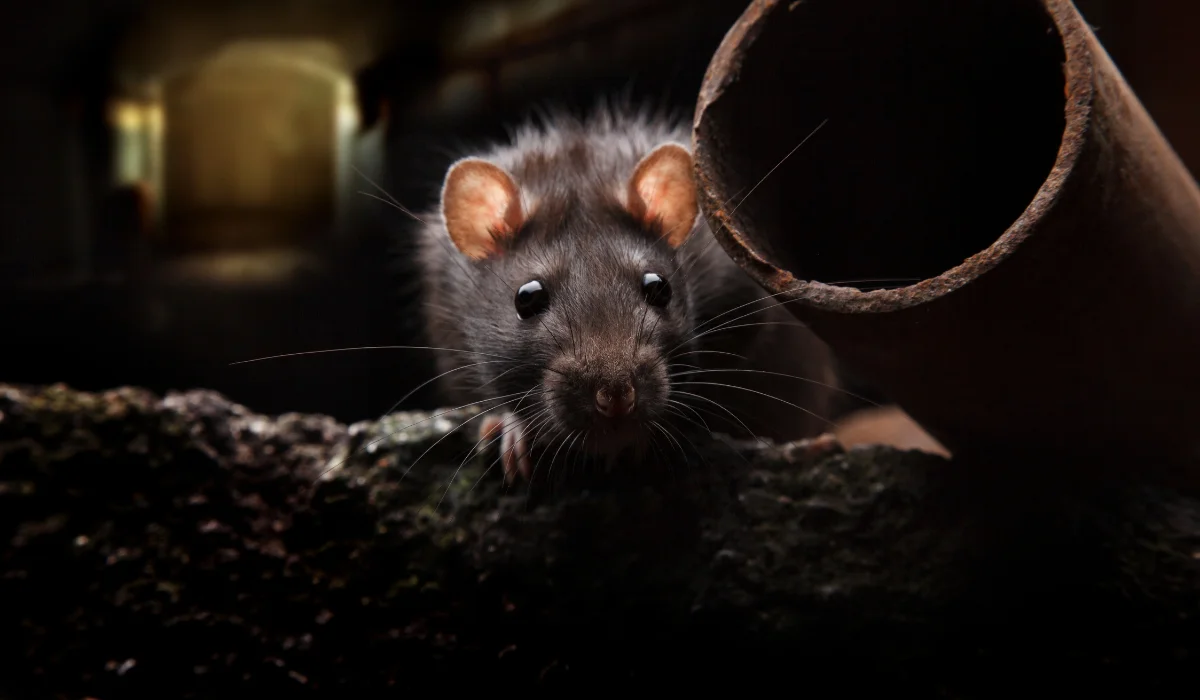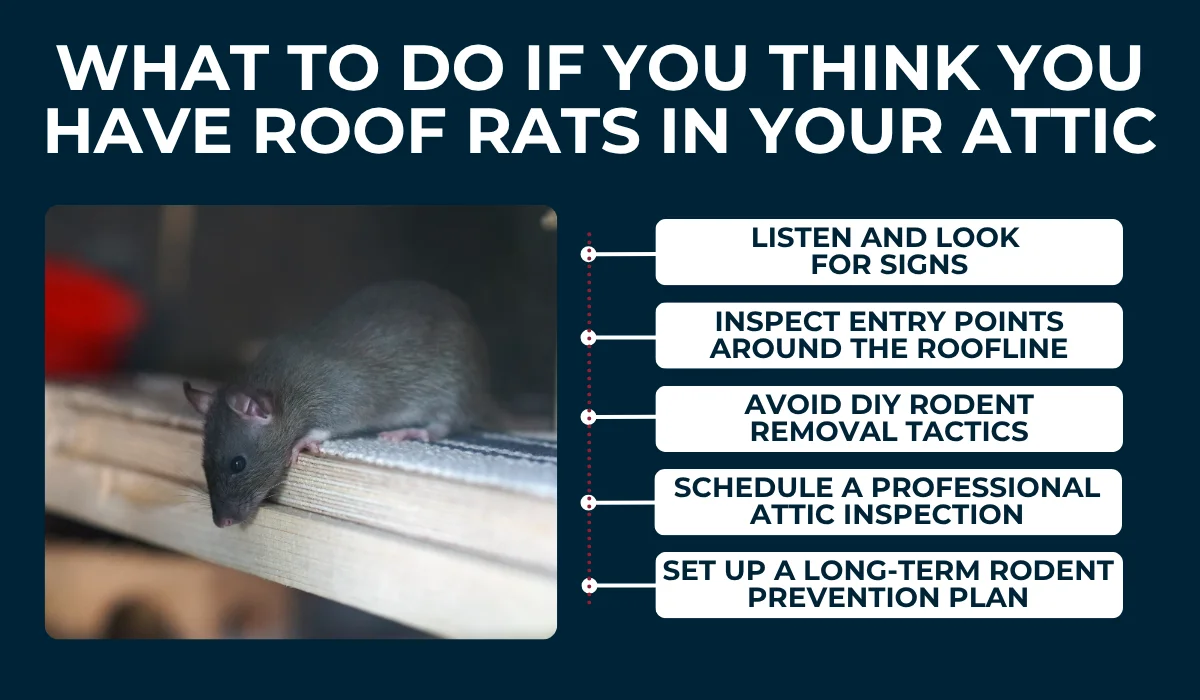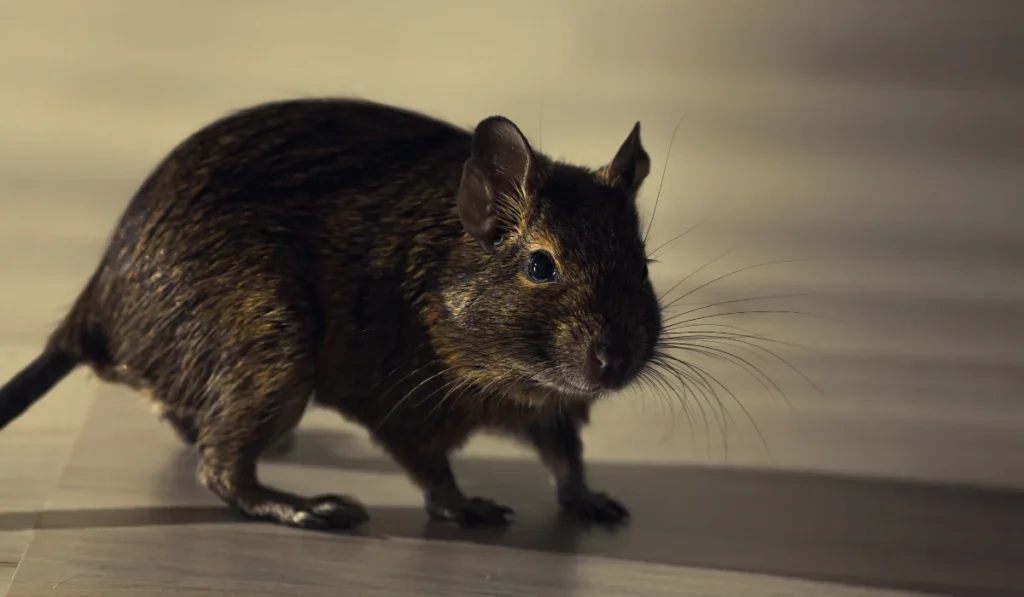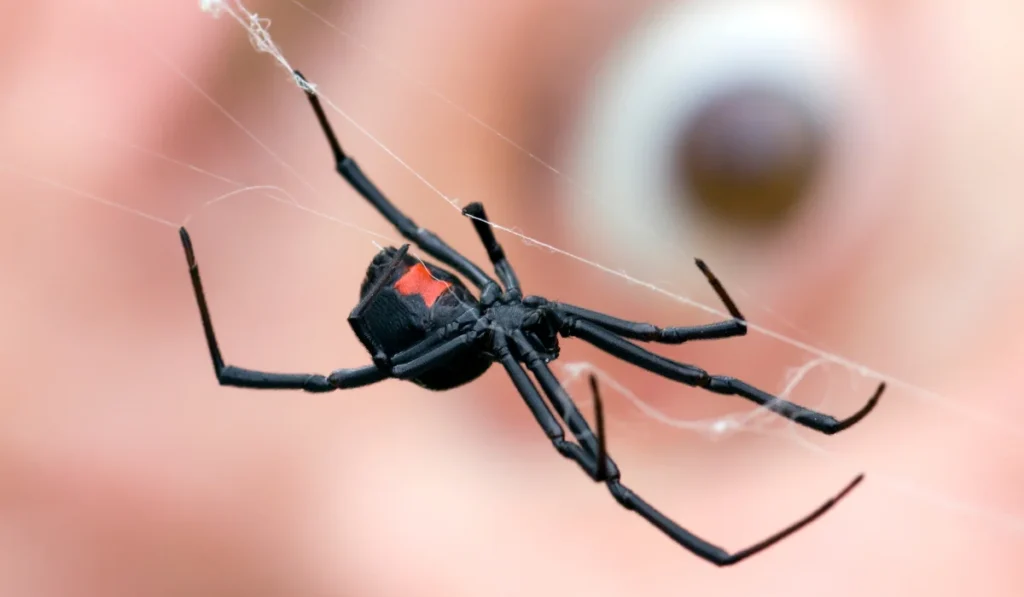
If you’re hearing scratching sounds above your ceiling or finding droppings in your attic this July, you might be dealing with roof rats. These agile critters are a common nuisance throughout Alabama, particularly in areas such as Birmingham and Huntsville.
These Alabama rodents don’t take the summer off. They often ramp up their activity during these hotter months.
But why would they choose your attic as their summer retreat?
Let’s talk about why they are drawn to attics in July and what steps you should take if they’ve already moved into your Alabama home.
Key Takeaways
- Roof rats choose attics in July because the heat, dry weather, and outdoor noise in Alabama push them indoors.
- Signs of a rodent problem include droppings, scratching sounds, gnawed wood, and greasy marks in the attic.
- Minor entry points and tree limbs provide rats with easy access to roofs, especially on older homes in Birmingham and Huntsville.
- Rodent control is most effective when homeowners hire a professional pest control company for both removal and prevention.
Summer Heat Drives Them Upward
When temperatures soar in Alabama, roof rats seek higher, cooler places to nest, particularly areas with consistent shade and minimal foot traffic.
Your attic offers them precisely that. With hot air rising and attic spaces staying relatively undisturbed, it’s an ideal refuge.
If your attic has insulation, they may burrow into it to stay cool, and the added darkness makes it even more appealing.
Outdoor Food and Water Sources Dry Up
July often brings dry spells that affect natural water sources.
When puddles, pet bowls, or birdbaths dry out, rodents begin searching for alternative sources of water indoors. That may lead them to your attic, crawl space, or garage, where condensation from HVAC lines or pet food can meet their needs.
In some cases, even a minor leak, such as a pipe or HVAC drip pan, can attract rodents and other wildlife.
Increased Outdoor Activity Makes Attics Safer
Yards get busy in the summer, cookouts, kids playing, dogs chasing anything that moves. That rise in foot traffic drives roof rats to quieter spots. Your attic offers cover from humans, dogs, raccoons, and other wildlife.
The further away they can get from noise and movement, the more secure they feel to settle down and raise their young.
Roof Access Becomes Easier in Summer
Heavy summer foliage often creates bridges between trees and rooftops. Roof rats are excellent climbers, and overhanging limbs make it easier for them to reach your home.
Once there, they look for minor entry points along vents, fascia gaps, and loose shingles.
Homes in Huntsville and Birmingham—especially older ones—are particularly vulnerable if not routinely inspected by a pest control company.
Attics Provide Ideal Nesting Material
Roof rats are opportunistic nesters. If your attic has storage boxes, leftover construction materials, or even animal bedding, they’ll use it to build their homes. And once a nest is built, these critters don’t leave quietly.
Along with droppings and other signs of rodent damage, they may chew on electrical wires, creating real safety hazards and increasing the risk of fire.
What to Do if You Think You Have Roof Rats in Your Attic
Think you’ve got roof rats in the attic? Here’s what you can do to get ahead of the problem:
Listen and Look for Signs
Start by checking for signs of a rodent infestation:
- Nighttime noises
- Gnawed wood
- Grease smudges on beams
- Droppings near insulation or stored items
If you spot any of these, you likely have a rodent problem. Mites and other parasites may follow rodents into your home, so it’s not just about the rats.
You may soon be dealing with additional pests.
Inspect Entry Points Around the Roofline
Walk the perimeter of your house and examine the roofline, gables, attic vents, and chimney flashing.
Roof rats don’t need much space; gaps the size of a quarter are enough.
In many Alabama homes, especially those with aging construction, unsealed gaps provide an ideal access point. Sealing these entry points is key for long-term rodent control and pest management.
Avoid DIY Rodent Removal Tactics
Trying to get rid of rodents with traps or over-the-counter products may seem convenient, but it usually doesn’t solve the whole problem.
DIY methods rarely address the root cause, and improper handling of nests and droppings can expose you to bacteria and parasites. Plus, rats are intelligent. They can learn to avoid traps if they’ve had a bad experience before.
Schedule a Professional Attic Inspection
A professional pest control company, such as Magic City Pest Control, brings the right tools and expertise to handle roof rats safely. Our technicians will assess the full extent of the issue, whether it’s isolated to your attic or spreading into the crawl space and walls.
With experience in both pest control and wildlife removal, we’ll get to the root of the problem and make sure it’s handled thoroughly.
Set Up a Long-Term Rodent Prevention Plan
Once the rats are gone, staying rodent-free means investing in a reliable pest management strategy.
At Magic City, our quarterly plans include rodent monitoring boxes that sync via Bluetooth and track rodent activity around your home.
Whether you’re in a ranch-style house in Huntsville or a two-story house in Birmingham, we help Alabama homeowners stay ahead of infestations year-round.
Let’s get your attic back and keep it that way.
Contact us today to learn how we can help you eliminate rodents for good.
Frequently Asked Questions
Can roof rats damage my HVAC system in the attic?
Yes, roof rats often chew through insulation and flexible ductwork, causing poor airflow, higher energy bills, and system inefficiency. Their nesting habits can also clog vents and reduce air quality in your home.
Are roof rats active only at night?
Roof rats are most active after dark; however, when populations grow or food is scarce, they may become active during the day, especially in quiet, low-traffic areas such as attics or garages.
Can roof rats spread disease to pets?
Yes, roof rats can spread parasites, such as mites and fleas, that affect pets. Their droppings or urine may also carry bacteria that can make animals sick if they come into contact with contaminated areas.









